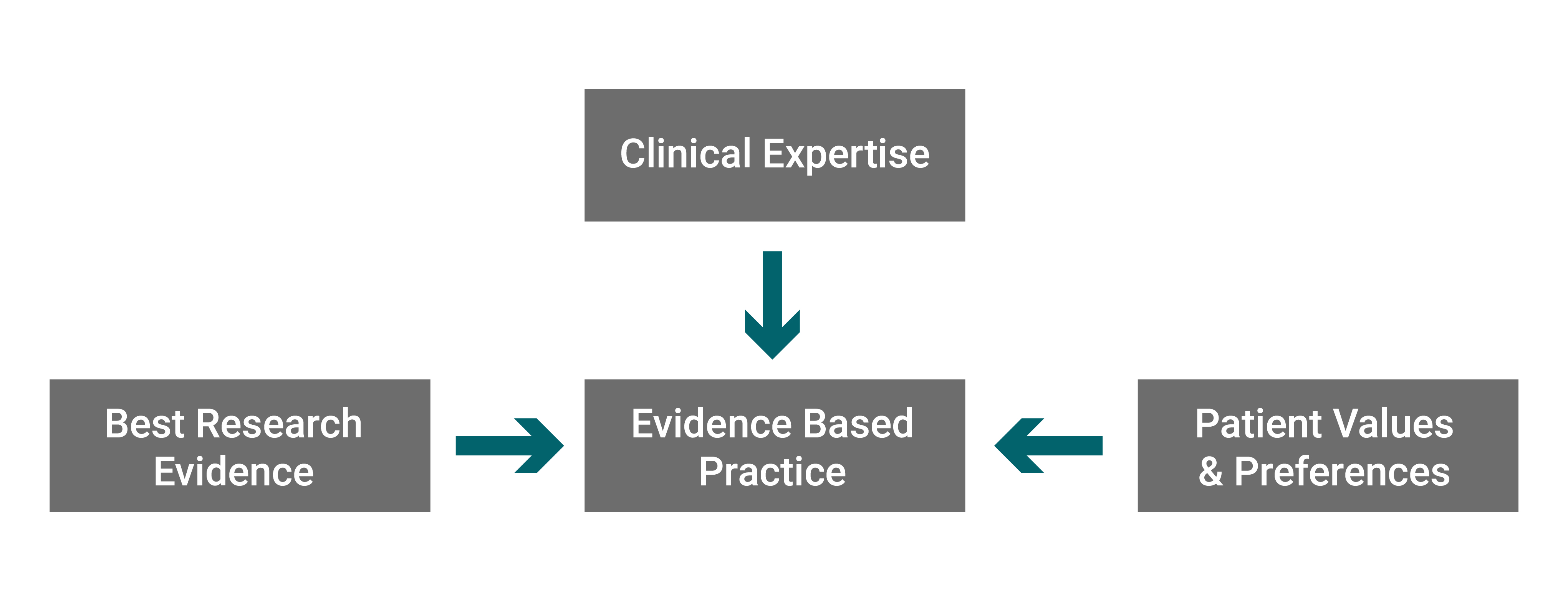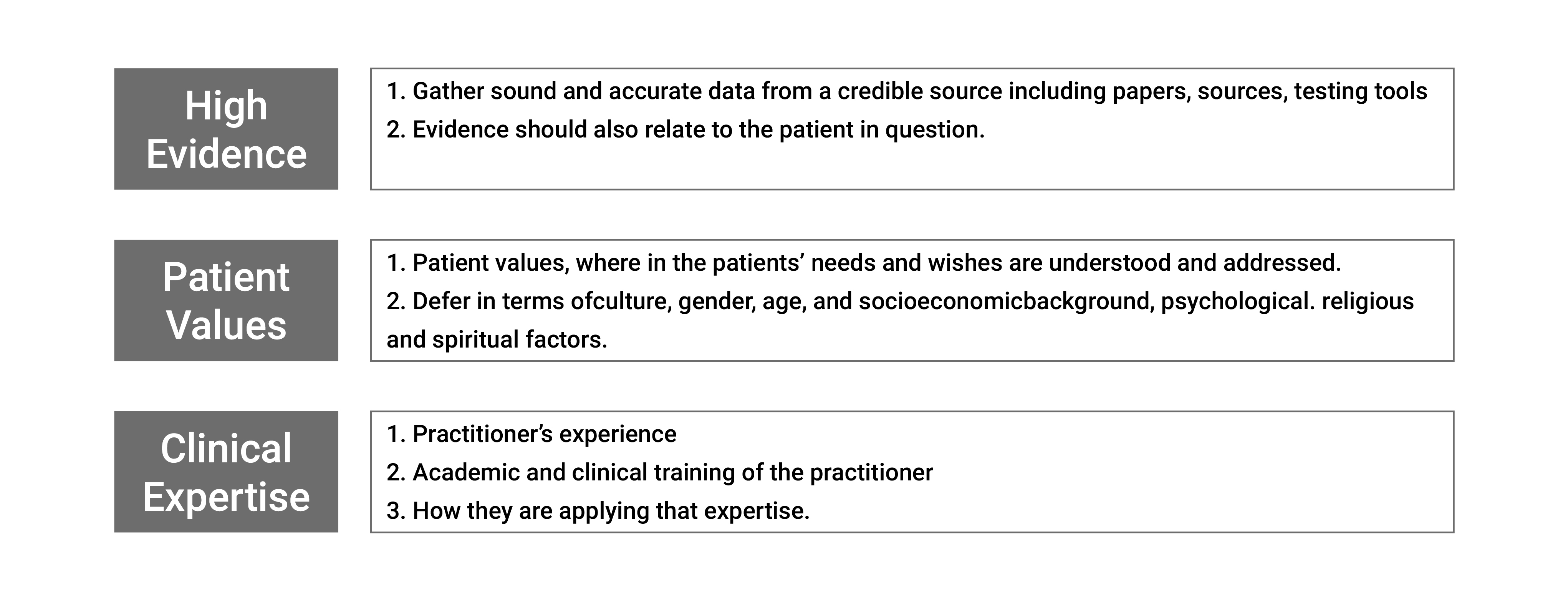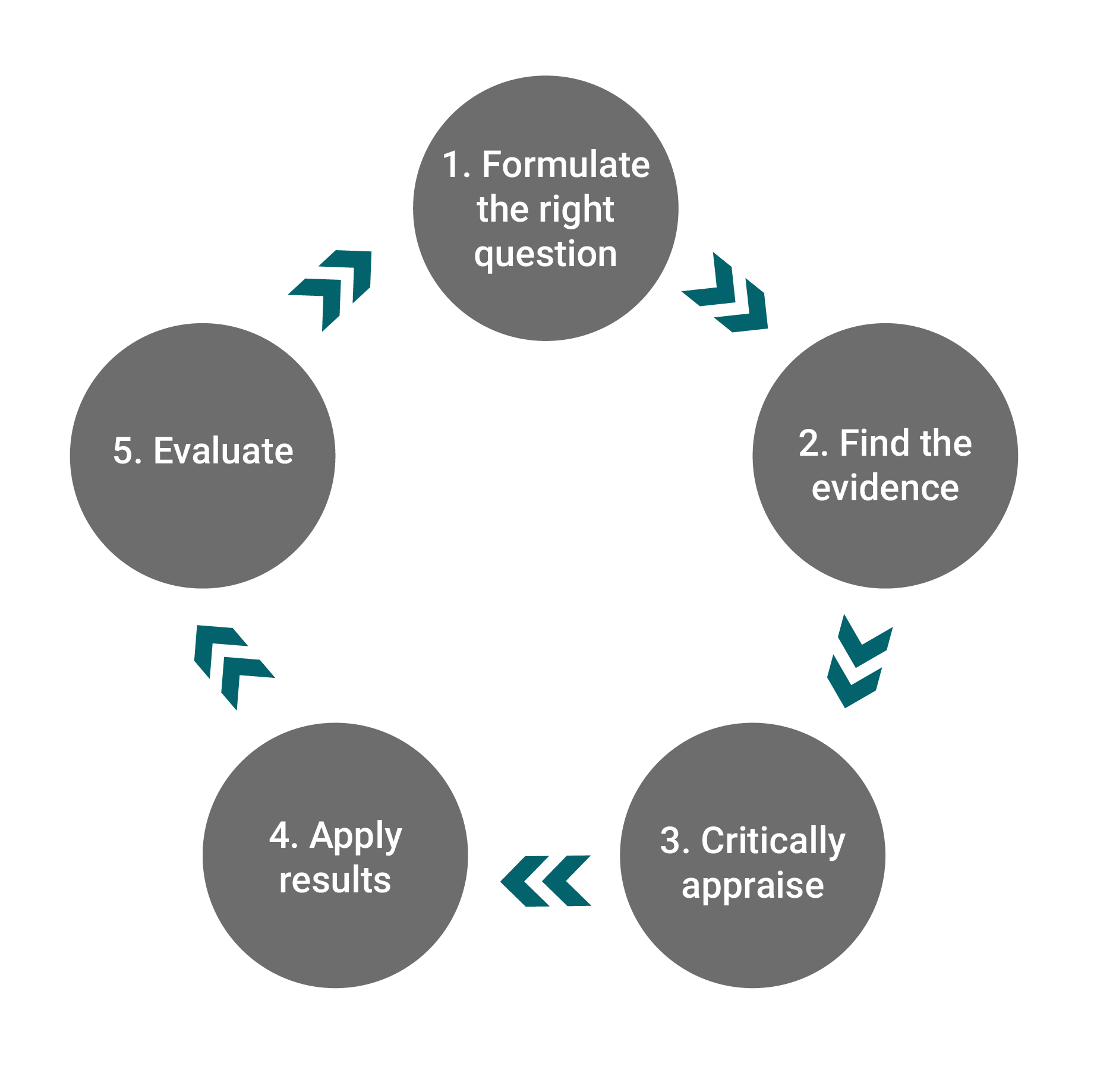Evidence Based Practice in Physiotherapy
We are constantly hearing about Evidence Based Practice (EBP) nowadays. Why is it so relevant in medical and paramedical practice? Why are medical and paramedical practitioners so inclined towards EBP? Before we address these questions, let us clarify what EBP is...
Evidence Based Practice is defined as 'the integration of best research evidence with clinical expertise and patient values.’(Sackett 1996)
Physiotherapy is an essential healthcare division which is involved not only in Preventive care but also in Rehabilitation of an individual after trauma or post-surgery. Hence, to make the practice more standardized and more systematic it is crucial that assessment and treatment is followed, ensuring certain factors.
These factors are nothing but core concepts of EBP which showcase the best practice based on a high level of Evidence, Patient Preferences and Clinical Expertise. Patient values and needs are taken into consideration while practicing it.

EBP is an amalgamation of three different approaches which are also considered to be its building blocks. It involves three approaches which are depicted as follows

What are the aims of EBP?
-
Provide the most effective treatment available, to enhance patient outcomes
-
Improve the quality of healthcare
-
Minimize medical errors
-
Help incorporate patient expectations into decision-making
What are the Steps to Practice EBP ?
(Sackett DL ,2000)
EBP is a systematic and standardized approach involving a few steps. The steps listed below will detail how an ideal EBP should be conducted:

The FIVE Steps to follow for EBP
However, applying these steps consciously to clinical practice can help us achieve even better patient care. Let us take a look at the steps below:
1. Ask the right question:
The asking of well-constructed clinical questions is one of the fundamental skills needed for EBP. By formulating a problem that is answerable, Physiotherapists direct their attention directly on what matters. Patient experiences typically cause these inquiries, which create concerns about the diagnosis, treatment, prognosis or etiology.
2. Find information to support the diagnosis:
It includes defining the problem and comparing with previously available evidence (literature) or conducting an evaluation using a diagnostic tool to achieve a clearer and more holistic understanding of the root cause and effect for the patient.
3. Evidence for validity, impact and applicability:
At this point, the data collected by the Physiotherapists, can be compared with the patient values and the diagnosis made by the physiotherapist to free the patient error judgment.
4. Engage the findings in clinical practice:
The findings produced from the previous step can be used to frame a treatment plan that is better suited to recovery for the patient. This will also require Physiotherapists to include concrete evidence showing the treatment's cost-effectiveness.
5. Evaluate:
The calculation will be twofold. One in patient terminology, where the doctor assesses the effectiveness of the EBP. This will also help to clarify the treatment's impact on the patient. The Physiotherapists may also use the EBP to track their practice and to understand and incorporate ways of enhancing themselves and thereby enriching their practice.
Levels of Evidence
The hierarchical structure for classifying facts is a pillar of EBP. This is called the levels of evidence. During therapy, physiotherapists are advised to find the highest standard of evidence to address the questions. The levels of evidence were originally described in a 1979 Canadian Task Force report on Periodic Health Inspection. The aim of the study was to establish recommendations on the periodic health examination and to base their recommendations in the medical literature upon evidence. When assessing the effectiveness of a specific treatment program, the authors developed a method of rating the evidence.
Advantages of EBP
-
EBP addresses six components of healthcare quality: health, effectiveness, patient experience, timeliness, efficiency and profitability.
-
It will help the therapist to evaluate the condition of the patient not only for pain relief but also to completely treat their root cause.
-
Helps improve the practice, because it means patients are satisfied with their treatment.
-
Additional costs to work in different health-care institutions have been shown to have been reduced.
Hurdles in EBP
-
There are several variables in the human body and each person has an unique body type and concern that needs to be resolved.
-
It is also important to combine the data collected with the patient's knowledge together with the doctor's experience in implementing EBP.
-
And therefore it is essential for the doctor and/or assistant to have an accurate understanding of the data and also knowledge of how to implement the same into their practice.
Conclusion
It is of importance to note that EBP is becoming an integral part of the healthcare system. The human body has many variables and each person has a unique body type and problem that needs to be treated. It is very important that the data learned be combined with the information of the patient along with the expertise of the doctor be used to implement EBP.
-
It is important to note that the EBP approach benefits both the patient and the physiotherapist..
-
The patient has a clear understanding of the cause for his condition and the treatment plan, which also helps to note the treatment plan's effectiveness.
-
EBP is important to the doctor's practice, as it helps to show that the treatment is valid and effective
-
It helps to increase the quality of the healthcare delivered and to attract patients because they will have evidence of the effectiveness of the treatment plans offered to them.


